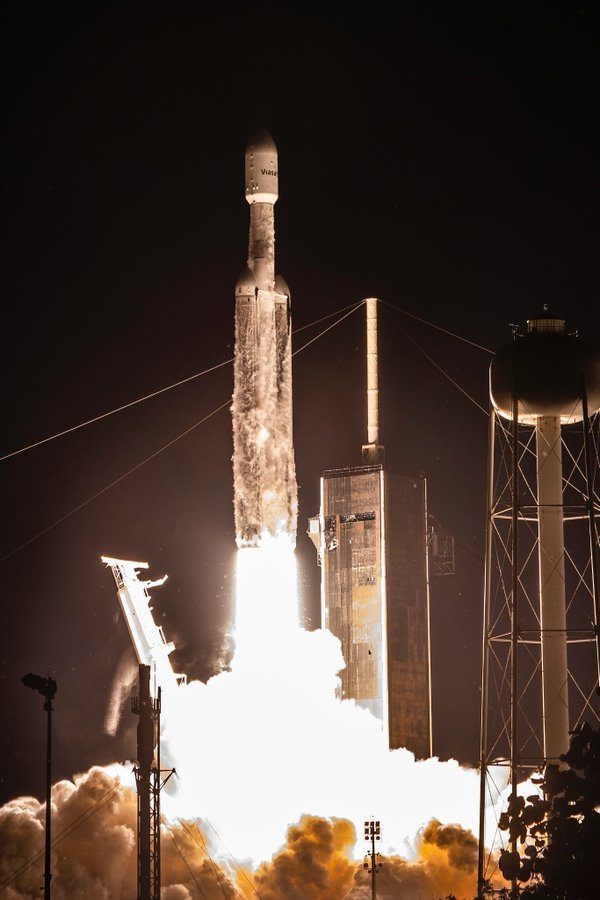While its launches are not very common, a Falcon Heavy launch can be spectacular as happened during a night launch from Cape Canaveral, Florida, USA, at 0026 GMT on 1 May 2023. The Falcon Heavy v1.2FT Block 5 rocket was flown with a set of reusable boosters, the B1053 on its third flight, and the B1052 on its eighth. However, these were used in expendable “legless” mode to elicit more performance from the launch which went most of the way to a full geostationary Earth orbit (GEO) (34,620 x 34,550 km x 0.1 degree inclination). For the same reason, the B1068 core first stage on its first flight was similarly discarded via a sea crash landing making the rocket with its non-reusable upper stage completely expendable.
The main payload carried was the 6,400 kg Viasat-3 Americas. This is the first of three Viasat-3 spacecraft for Viasat consisting of Viasat-3 Americas Viasat-3 Asia-Pacific and Viasat-3 EMEAs which will provide high capacity Ka-band communications from GEO. The Viasat-3 Americas spacecraft is planned to operate from 88.9 degrees West, The spacecraft was built by Boeing using its BSS-702MP+ bus design.
The launch also carried a secondary pair of satellites as part of its payload: Astranis’ 400 kg Arcturus (Aurora-4A) satellite which uses the Astranis MICROGEO bus. It is carrying a broadband communications payload for services over Alaska. It will use electric propulsion to reach its final GEO position, albeit with most of the work being done via the rocket’s direct insertion to GEO. The other satellite is the Gravity Space 22 kg satellite G-Space 1 which is carrying a small “placeholder” communications payload Nusantara H-1A for Indonesia and a small space situtational awareness imaging/tracking payload called Orbit Guards for Infinite Orbits.
The launch had been delayed stormy weather on 26 April (the pad had been struck by lightning during one of the later storms) and had a last minute abort on 28 April for undisclosed reasons.
Update on 1 May 2023: Viasat has decided to move the launch of one of its remaining Viasat-3 satellites – believed to be VIASAT-3 APAC (VIASAT-3-3) – from the much delayed Ariane 6 to another, as yet unspecified, launch vehicle.
Note that the original story had the incorrect bus design for Viasat-3 Americas. This has now been corrected.









